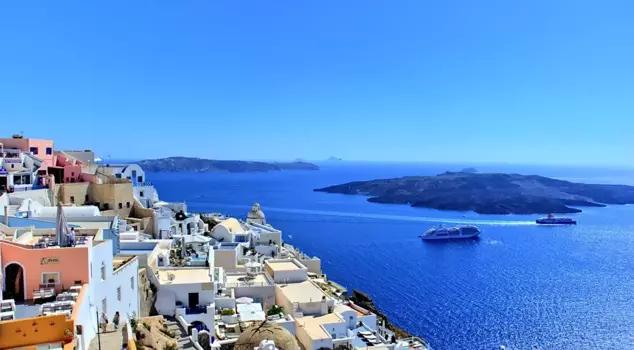
21.04.2025 14:31
The island of Santorini in the Aegean Sea could sink into the waters at any moment. It is stated that if a major earthquake occurs again on the volcanic island, the island could be completely submerged.
On the cliffs of Santorini, Greece's most famous tourist island, there is a world-renowned tourism industry worth millions of dollars. Beneath it lies the bubbling risk of a massive volcanic eruption. A major ancient eruption left behind a wide crater and a horseshoe-shaped ring, revealing this dreamlike Greek island. Now scientists are investigating how dangerous the next major earthquake could be. The British broadcaster BBC published an analysis on the subject. Almost half of Santorini's population of 11,000 had fled to find a safe place before the island was shaken by a series of earthquakes.
VOLCANIC ERUPTION COULD BRING THE ISLAND'S END
About two-thirds of the world's volcanoes are underwater, but they are hardly monitored. Professor Isobel Yeo from the British National Oceanography Centre stated, "In terms of understanding their dangers, it resembles the 'out of sight, out of mind' situation compared to more famous hazards like Vesuvius." This study, conducted immediately after the earthquakes, will help scientists understand the seismic unrest that could herald a volcanic eruption. The last eruption of Santorini was in 1950, but experts say there was even a "period of unrest" in 2012. Magma flowed into the volcanoes' chambers, and the island "swelled." According to scientists, underwater volcanoes can indeed cause really large, really destructive eruptions. The Hunga Tonga eruption that occurred in the Pacific in 2022 created the largest underwater eruption ever recorded. A tsunami occurred in the Atlantic, with shockwaves felt even in England. Some islands near the volcano in Tonga were so devastated that people never returned.
RISK AREAS UNDER THE MICROSCOPE
The Discovery ship is investigating the caldera of the Santorini Volcano and is sailing towards Kolumbo, another large volcano located about 7 km northeast of the island. Neither volcano is expected to erupt anytime soon, but it is just a matter of time. This research is very important because it will inform the local population about how active the volcanoes are and will map areas where access will be prohibited during an eruption. It will also reveal which parts of the Santorini seabed are the most dangerous. The recent earthquake crisis in Santorini once again highlighted how vulnerable the island's residents are to seismic threats and how dependent they are on tourism.